

PopEntertainment.com >
Feature
Interviews - Actors >
Features Interviews F to J > Anthony Hopkins (2006 interview)
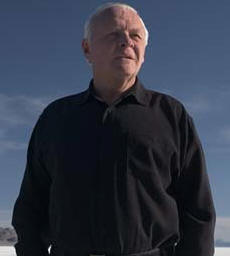 Anthony
Hopkins
Anthony
Hopkins
The World's Humblest Thespian
by Jay S. Jacobs
Copyright ©2006 PopEntertainment.com. All rights reserved.
Posted:
February 10, 2006.
You don’t want to upset
Anthony Hopkins, do you? Then, whatever you do, don’t ask him to recite a
certain famous line of his. “They
want me to do the fava bean speech all the time,” the acclaimed actor
acknowledges, laughing. “If someone comes up and says can you do the fava
beans, I say…,” he mimes falling asleep and snoring.
It’s easy to understand.
The line is one of the most famous in horror movies. However, for Hopkins,
it is just a part of a role he played years ago. He’s really nothing at
all like Hannibal Lecter.
No, Anthony Hopkins is an actor. He portrays
people for a living. It’s a job. He doesn’t really eat
people with the aforementioned beans and a nice Chianti.
Still, Hopkins finds all of the acclaim he has received just a little perplexing.
For example, he has now been knighted, but he doesn’t think of himself as
Sir Anthony Hopkins. He’s just Anthony – although even this is not just
how he’s known to his family, for his given name is Phillip Anthony
Hopkins. However, his middle name is how he thinks of himself.
“[I’m] Anthony,” he says. “They put Phillip
first and I don't know why they did that when I was born. My grandfather
used to call me George. I don't know why. But kids do that. Their fathers
call them Spike or Butch or Chief or something.
My father used to call me
Charlie and my grandfather used to call me George which is maybe why I
have a personality disorder. [Call me] Anthony. Tony.”
This personality disorder has allowed Hopkins to slip into dozens of different characters in a career that spans
decades. He has played such legendary real life
personalities as Richard
Nixon, Pablo Picasso, Adolf Hitler, John Quincy Adams, Yitzhak Rabin and
Charles Dickens. He has taken on beloved literary roles such as Othello,
Quasimodo, Zorro, Lt. William Bligh, Van Helsing, Daniel Webster and Titus
Andronicus. Hopkins has been in art-house smashes like The Remains of the Day,
Amistad, Legends of the Fall and Howard’s End. He has done
respected modern films such as The Edge, Proof,
84 Charing
Cross Road, Meet Joe Black
and The Human Stain.
He'll even do the odd big bucks blockbuster like
Mission: Impossible 2,
Bad Company, Magic,
Alexander, The Mask of Zorro
and Dr. Seuss' How the Grinch Stole Christmas.
But somehow, all the diversity of work has been
forced to take a back seat to his Oscar-winning role of Dr. Hannibal “The
Cannibal” Lecter in The Silence of the Lambs. Hopkins also played the role in a sequel (Hannibal)
and a prequel (Red Dragon). While Hopkins is proud of the character and glad that it has struck a chord, he
is ready to let go of the bad doctor. This means, no matter what Hollywood
buzz says, Hopkins will not be doing narration for the next
Hannibal film.
“No. That’s a total rumor.” So he’s closing the
door on the character? “Oh, yeah,” Hopkins says, assuredly. “He’s done forever.”
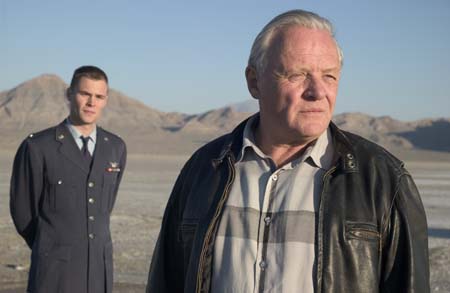 Hopkins relates much more to his latest role than his most famous one. In
the movie The World’s Fastest Indian, he again takes on a real life
role – that of Burt Munro. Munro was an eccentric, slightly crotchety but
good-hearted older man in New Zealand who set out to break the world land speed record on a fifty
year-old classic Indian motorcycle that Munro had revamped using homemade
and household supplies. He was a man who knew no boundaries. He harbored
people no ill will. He was a little odd, but he was also someone who
related with people and did not judge them. “I think that Burt
Munro is a lot like me,” Hopkins says.
Hopkins relates much more to his latest role than his most famous one. In
the movie The World’s Fastest Indian, he again takes on a real life
role – that of Burt Munro. Munro was an eccentric, slightly crotchety but
good-hearted older man in New Zealand who set out to break the world land speed record on a fifty
year-old classic Indian motorcycle that Munro had revamped using homemade
and household supplies. He was a man who knew no boundaries. He harbored
people no ill will. He was a little odd, but he was also someone who
related with people and did not judge them. “I think that Burt
Munro is a lot like me,” Hopkins says.
Filming Burt Munro’s
life was a career-long labor of love for screenwriter and director Roger
Donaldson. One of Donaldson’s first films, back in the early 1970s, was
Offerings to the Gods of Speed, a documentary on Munro and how he
traveled across the world to break the land speed record at the Bonneville Salt Flats in Utah
on his rickety old Indian bike. Donaldson had always wanted to revisit the
fascinating character in a feature film, but his career took a life of
its own – over the years he helmed such films as Sleeping Dogs,
Smash Palace, No
Way Out, Cocktail, Thirteen Days, Species
and The Bounty in 1984 with future World’s Fastest
Indian star
Hopkins.
At the time, the
director and star were young and brash and they got on each others nerves.
But two decades of time and experience made them ready to give working
together another try.
“We met like three-four
years ago at a party and
we'd both mellowed out a bit and a lot of water
had passed under the bridge and I thought that maybe we'd work together
again,”
Hopkins says. “I think that as you get older you get sensible maybe and
get a bit of perspective on things. I'd figured out some years ago that
the director is in charge of the movie. That doesn't mean to say that
every director is good or that every actor is good, but the director –
that's his job – to run the movie. He's the boss. I remember on the first
day that we were filming and the wheel comes off of the trailer and Roger
said, ‘Can we do another take?’ I said, yeah. ‘You sure?’ I said, yeah.
And so he did about fifteen takes. But he's a perfectionist and he wants
to get it right, and I thought that since this was the program. I'll just
go along with it.”
“Anthony is an awesome
actor,” Donaldson says. “We made The Bounty together many years
ago. We were ready to kill each other after that experience, as he may
have told you already. But what I did know and what I did recognize is
that he’s a genius actor. I realized that to do that part so convincingly,
he gave an enormous amount of himself. He always gives an enormous amount
of himself. To give that much, you know, on some characters, it’s hard to
put the character to bed at the end of the day and then be Mr. Nice Guy.”
In fact, Hopkins
looks back at his younger, more hot-headed days with a bit of bemusement.
“Well, I don't regret [what I did.] That's
the way that it was then and when you're younger you’ve got a lot of ideas
and you're probably more insecure – all of those things. I work with young
actors now and I see their insecurities, and I make fun of them. I don't
make fun of them, but I make them laugh because I know exactly what
they're going through. As you get older you think it's only a movie after
all. It's not brain surgery.”
Hopkins and Donaldson had first discussed doing
a biography of Ernest Hemingway called Papa, but it never got off
the ground. Then Donaldson asked Hopkins to take a look at the Munro script that he had been working at on
and off for three decades.
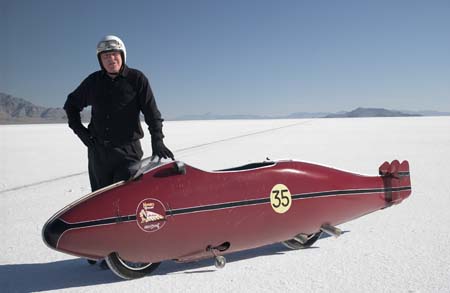 “There
are some sorts of movies – like this movie – that don’t appeal to the
studio system,” Donaldson acknowledges. “This film has spanned my whole
career as a filmmaker, really. It started out as one of the first films I
made as a documentary. The real guy just stuck with me. I could never
forget this guy. When I started making feature films, which was a few
years later, I just thought there was something about this character which
would say a lot for me personally about my own experience of coming to
America, as well as be a connection to a film and a character that I had
met and come with on one of my first trips to America.”
“There
are some sorts of movies – like this movie – that don’t appeal to the
studio system,” Donaldson acknowledges. “This film has spanned my whole
career as a filmmaker, really. It started out as one of the first films I
made as a documentary. The real guy just stuck with me. I could never
forget this guy. When I started making feature films, which was a few
years later, I just thought there was something about this character which
would say a lot for me personally about my own experience of coming to
America, as well as be a connection to a film and a character that I had
met and come with on one of my first trips to America.”
Hopkins recalls, “Roger Donaldson sent me the DVD of the documentary and the
script and he said, ‘Watch the documentary first and then read the script
and see what you think.’ So I watched the documentary. I thought it was
very good. I phoned him and he said, “Have you read the script?” I read
the script the next day and I phoned him up and said, yeah, I’d like to do
it.”
“As a result of getting
back together on [the aborted Papa project], I said, hey, I’ve
written this script that you may be interested in doing,” Donaldson
agrees. “He read the script the same day as I remember and called me back
and said he’d love to do it. Once he was on board, the whole movie became
a reality… I don’t know any other actor who could have done with it what
he’s done with it. For me he found the heart and soul of this character.
He found the subtlety and the nuance of the character. He delivered my
lines that I’d written in a way as though this character thought them up
at the moment he’s saying them. As a director you realize you’re only as
good as the people you cast in your movie. I was lucky to have Anthony in
my film.”
In some ways, The World’s Fastest Indian
is a few different films in one. The first third of the movie shows Burt
in his native New Zealand, the odd neighbor who bugs his neighbors but is respected and
liked for his single-minded obsession with inventing and speed. Hopkins tried to capture the vibe of Munro, but realized it was futile to
try and be him.
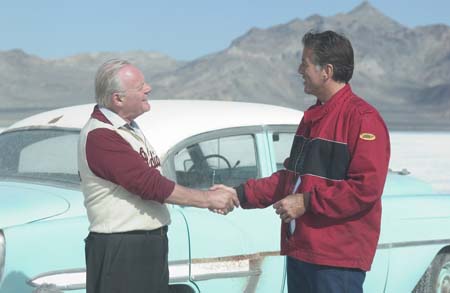 “I don't look anything like the real Burt
Munro,” Hopkins says. “I resisted doing a Rich Little, because if you do that you
become a mimic. With an accent like this guy, a New Zealand accent… if you strive to get it absolutely accurate then it's not
a performance. It's a mask. You may as well get a Munro mask. That's not
what acting is about. That's my opinion. So you just airbrush it in there.
You just put a couple of pen strokes here and there. Roger on the set
everyday would say, 'Tony, you've lost it a little bit this morning. Let’s
watch those sounds.' But the New Zealand, South
Ireland accent it was easier for me because Burt sounds a little bit
Cornish or maybe Irish. So it was easier than North Ireland is much more, I think, a much more pitched sound. It's a difficult
sound to get.”
“I don't look anything like the real Burt
Munro,” Hopkins says. “I resisted doing a Rich Little, because if you do that you
become a mimic. With an accent like this guy, a New Zealand accent… if you strive to get it absolutely accurate then it's not
a performance. It's a mask. You may as well get a Munro mask. That's not
what acting is about. That's my opinion. So you just airbrush it in there.
You just put a couple of pen strokes here and there. Roger on the set
everyday would say, 'Tony, you've lost it a little bit this morning. Let’s
watch those sounds.' But the New Zealand, South
Ireland accent it was easier for me because Burt sounds a little bit
Cornish or maybe Irish. So it was easier than North Ireland is much more, I think, a much more pitched sound. It's a difficult
sound to get.”
The middle section of the film becomes a
fish-out-of-water road movie when the somewhat naïve Kiwi experiences the United States of the 1960s. Burt meets lots of strangers who are charmed by the
man’s unassuming determination to succeed, a transvestite hotel clerk, a
Hispanic car dealer, an Indian and an extremely friendly widow. Looking at
this time of history with an outsider’s eyes, Munro is able to experience
some of the highs and lows of the era – the sexual revolution, drugs, the
Vietnam War – with a charming open-mindedness.
“This
movie reflects very much my own experience of coming to America,” says
director Roger Donaldson. “I remember when I first came here in 1968 I was
a photographer and I wanted to see Haight-Asbury. I literally wanted
to see Haight-Asbury. I stood on the corner and was very disappointed
to see that I’d actually missed it by a few weeks. The hippies were not
quite so out there in full force. But I did remember going to a very
memorable concert up in Oregon somewhere that was a week before Woodstock.
I don’t remember where exactly. I got up on stage with Ike and Tina Turner
and got these amazing pictures at the height of their fame.”
“It’s a bit like me when I came to America,” agrees Hopkins. “I’m
pretty wide-eyed, you know? I was taken by surprise by it. That’s how I’ve
treated my whole life, actually, always being in a state of surprise. I
moseyed onto this train called show business many years ago. I’m still
doing it. So it’s a pleasant journey.
I felt like that when I came to
New York thirty odd years ago. I was taken to The Algonquin and I'd been
living in England for years, and I wanted to come to America. I remember getting up in the morning at The Algonquin Hotel on
September 13th, 1974. I went out on Fifth Avenue to get a newspaper. Just walking on Fifth Avenue I thought, I'm home. I had that feeling about it.”
“I did this road trip
around America – and I’ve done a lot of them over the years,” Donaldson
continues. “America is just a great country to drive. Everywhere you stop,
there are always characters, there’s always interesting people and they’re
interested in foreigners. It’s a very open, hospitable place; I’ve found America
to be. I mean I’ve seen a few nasty things, too. A few people have done
things like pulled guns on you and crazy shit like that. But they’re in
the minority.”
Finally, the last
section of The World’s Fastest Indian is a sports achievement film,
in which our hero finally gets to face his challenge and fight all the
odds to attain his best.
“That scene where Burt arrives at Bonneville I
had learned that speech,” Hopkins recalls. “Not that it's a huge moment being at Bonneville, because
I’m not interested in speed records. That’s not my thing. But I remember
doing that scene. It was a cold morning and Roger said action and I did it
and I got quite emotional about it because it was similar to my own life.”
Not only is Burt Munro a character like himself,
Hopkins realizes, but he is also very much like his director.
“He has got a passion for motorbikes and cars
and speed,” Hopkins says of Donaldson. “He’s an Aussie, you know, has a lot of
physical courage. He's been up Everest and has been up around the Horn.
He’s done all of those things. He's an adventurer and his work is like
that. When you're on the set with him he's always got steady cams and he's
improvising and he's always moving fast. He does do a lot of takes. I
remember that one day there was a scene where I'm making a cup of tea
before I have my heart attack and there was this tray on the table and I
have to pick the tray up, and he goes, 'Okay, cut. Let’s go again. Action.
Okay, cut.' So I went around to the monitor and he was sitting there like
this, and a moment later said, 'What the hell are you looking at? I'm a
perfectionist.' I said, really?
Fifteen takes for this cup of tea. It’s
honestly on the screen for about two seconds.
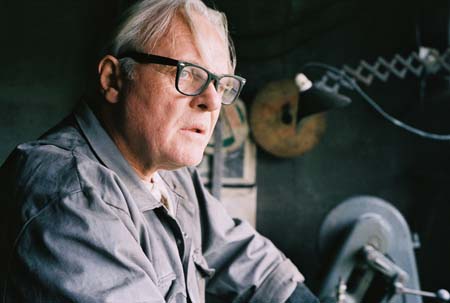 “But
that’s the way he is. And I sort of laugh at him, I say you’re crazy. He
says, ‘yeah, I know.’ I mean, I don't have that. I’m more of a Clint
Eastwood guy. If a shot looks good enough I'm like, 'That's good enough.'
Sean Penn was telling me about Clint Eastwood and he said Clint goes, 'Did
you get the shot? Was it in focus?
Good. Let’s move on.' I love that. But I
liked Roger as well.”
“But
that’s the way he is. And I sort of laugh at him, I say you’re crazy. He
says, ‘yeah, I know.’ I mean, I don't have that. I’m more of a Clint
Eastwood guy. If a shot looks good enough I'm like, 'That's good enough.'
Sean Penn was telling me about Clint Eastwood and he said Clint goes, 'Did
you get the shot? Was it in focus?
Good. Let’s move on.' I love that. But I
liked Roger as well.”
Hopkins
has a few films coming up, but he insists that he is not constantly
working, no matter how it may appear.
“I haven't made that many movies, but it just
looks like that. I made All the Kings Men. This one I did well over
a year ago. So that's taken about fifteen months. All the Kings Men
won't come out until September and so that'll be two years. Proof
took a long time coming out. But this year that I've done about three.”
In the meantime, being
a satisfied man in his own life, Hopkins has decided to play more good and positive characters like Burt
Munro rather than the disturbed characters he has made a living at in the
past. Well, for the most part…
“Actually,” he laughs, “my next film [currently
called Fractured] is with Ryan Gosling and I play a man who kills
his own wife. She's having an affair. It's not Hannibal Lecter, but this
man is a little strange. He's on the surface very normal, very quiet, and
he kills his wife because she's having an affair with a man. The cop who
arrests him is the man she's been seeing, and it's a revenge thing. He
sets up a test. This guy is involved in those Rube Goldberg machines, and
he sets up for the lawyer… he designs the perfect murder, but leaves one
flaw. The law finally gets him.”
Another film
he has worked on is Robert Zemeckis’ (Back to the Future, Forrest Gump,
The Polar Express) computer generated version of the epic
Beowulf. It was a very different
type of work for the actor – and honestly not a technique that he was all
that fond of.
“There
were buttons all over your head. It was a pain in the ass,”
Hopkins says. “They put all these little dots over you. It’s funny, you've
got no set. You stand there with a little helmet on. You really feel
literally ridiculous. Then they film you. It's a very strange process. I
don’t know why they do it that way. Why don’t they just film against a
blue screen? But I guess it's the new thing. I think eventually they won't
use actors. They're sneaking up on us to get rid of us.”
If that were to happen,
it wouldn’t be the end of the world to Hopkins. Not to say that he doesn’t
enjoy his work, however it was something that he just sort of fell into as
a child.
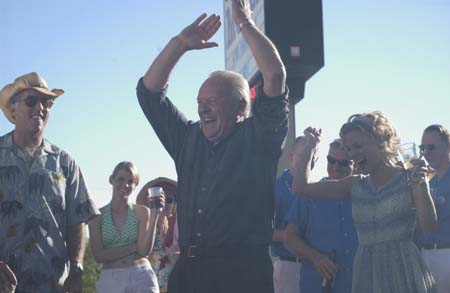 “I couldn't figure out anything when I was in school. I became an actor because I didn't know
what else to do academically. I wasn't good. I was just slow or different.
I don’t know what it was. I remember kids in school who could understand
math and all of that. We had one guy in school who was brilliant. He was
like a genius. I don't know whatever happened to him. He ended up driving
a truck somewhere, but he was brilliant in school – a good student. David
Davis was his name. He was amazing. I hated him because he never did any
homework. He just got it all the time. I couldn't do that because I don't
have that kind of brain. We're all different. Some people are musicians.
Some people are actors. Some people are accountants. Some people are
agents. Some people are newspaper guys or drivers or whatever. We're all
different.”
“I couldn't figure out anything when I was in school. I became an actor because I didn't know
what else to do academically. I wasn't good. I was just slow or different.
I don’t know what it was. I remember kids in school who could understand
math and all of that. We had one guy in school who was brilliant. He was
like a genius. I don't know whatever happened to him. He ended up driving
a truck somewhere, but he was brilliant in school – a good student. David
Davis was his name. He was amazing. I hated him because he never did any
homework. He just got it all the time. I couldn't do that because I don't
have that kind of brain. We're all different. Some people are musicians.
Some people are actors. Some people are accountants. Some people are
agents. Some people are newspaper guys or drivers or whatever. We're all
different.”
As a different man, Hopkins is always expanding, always testing himself. This goes to the arts
as well. He may make a living as an actor, but he has been experimenting
with other art forms for his personal gratification.
“I started off as a kid taking the piano and I
wanted to be a musician. I say that in retrospect, I wanted to be a
musician. I don't know how much I wanted to be, but I just wanted to be
famous. Because I wanted to escape from what I felt was my limitation in
life because I wasn't a good student. And I wanted to write music. I
didn't know what I was doing. I never had the technique or the
understanding of it. Academically I don't grasp things at all that well.
But I've always played the piano and I can improvise on the piano. The
problem is that I can't write down what I write. I can read music, but I
can't write it down because I don't have knowledge. My wife Stella heard
me and said, 'That's beautiful. Why don't you get some help?' So I phoned
up someone who she knew, through a friend of hers, who's a composer in his
right and a musician. I went to his studio and he gave me the freedom of
his studio to use this synthesizer keyboard. We became good friends and
he's got no ego at all. He's a composer and a really good one. He helped
me with all the electronic stuff of the computers. I don't understand
that, although I'm learning. I'm learning orchestration… And I built it up
that way and I made the first big piece that I call 'Margam,' which is
where I was born. It sounds pretty good and it's being performed in San Antonio in May at the Symphony Orchestra down there.
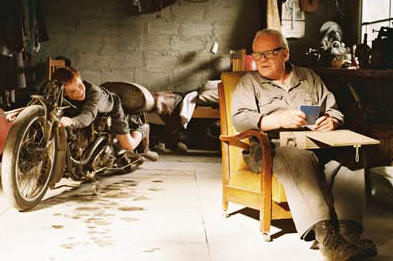 “With
painting it's the same. She's gotten me to do some paintings for this
gallery in San Antonio again and so we're combining an art exhibition and this symphony.
It sounds like a real ego trip, doesn't it? She said that she wanted me to
do a hundred paintings for this little art gallery. A hundred paintings.
So I did these little beautiful pen drawings or pen paintings like, what
are they called they're like felt pens, but different types and some part
are like felt brushes. So I painted these landscapes and I do this and
change colors and then she got me to do acrylics, and now I've done twenty
five acrylics for the library thing. Then I'm going down to San Antonio on Thursday to see the orchestra. So I figure that the thing is to
not analyze it and people will say, 'Oh, you've got no technique and so
therefore no perspective.' I think, to hell with it. They seem to like it
and they want to buy them. And I think that it's all a happy design. I'm
not saying that I'm Picasso or anything, but I do enjoy the freedom of
free expression without knowing anything about it. I know a little bit,
but not that much.”
“With
painting it's the same. She's gotten me to do some paintings for this
gallery in San Antonio again and so we're combining an art exhibition and this symphony.
It sounds like a real ego trip, doesn't it? She said that she wanted me to
do a hundred paintings for this little art gallery. A hundred paintings.
So I did these little beautiful pen drawings or pen paintings like, what
are they called they're like felt pens, but different types and some part
are like felt brushes. So I painted these landscapes and I do this and
change colors and then she got me to do acrylics, and now I've done twenty
five acrylics for the library thing. Then I'm going down to San Antonio on Thursday to see the orchestra. So I figure that the thing is to
not analyze it and people will say, 'Oh, you've got no technique and so
therefore no perspective.' I think, to hell with it. They seem to like it
and they want to buy them. And I think that it's all a happy design. I'm
not saying that I'm Picasso or anything, but I do enjoy the freedom of
free expression without knowing anything about it. I know a little bit,
but not that much.”
It’s refreshing to see an actor who is so
well-grounded. Despite all his acclaim, this humility also extends to his
day job. Hopkins was recently named the greatest British actor ever at the
legendary London Old Vic Theatre, beating out such legends as Laurence Olivier and Alec Guinness.
“It's a source of puzzlement to me,” Hopkins has to admit. “I'm very pleased that they call me that. I've
thought a lot lately about it, but I honestly don't know. I blush at it
because I worked with Olivier. He's a great, great actor. I've seen guys
like Alec Guinness. It was a lovely thing. It's great to be told that. But
I remember I went out in this corridor and I thought, ‘Well, I've got a
few enemies in England now.’ Maybe I have an attitude which is open. I don't know what's
happened to me over the last few years except that some things opened up.
I suppose in the last ten years, and I don't know how to explain this, but
personally I don't take any of it seriously. I really mean it. I don’t. I
do my job. I do what I'm paid to do. I show up and I'm always prepared.
Now I'm prepared by learning the text so well that when I show up I'm
relaxed and the performance sort of happens. Now whether that's good or
bad I don't know. I've been in some stuff which was bad and I've given
some bad performances as well.
“Whatever I’m going to say is going to sound
very egocentric and self-centered anyway and so I better shut up,” Hopkins smiles. “I got the Cecil B. DeMille award recently [at the Golden
Globes]. It was a very pleasant award and I was very pleased to get it.
But I'm still there standing up there, 'Have they got the right person
here?' I still do that.”
CLICK HERE TO SEE WHAT ANTHONY HOPKINS HAD TO SAY TO US IN 2011!
Email us Let us know what you think.